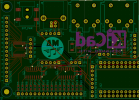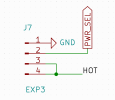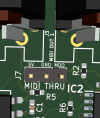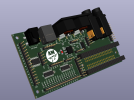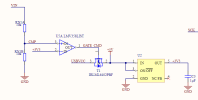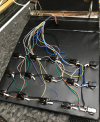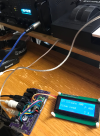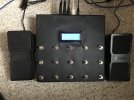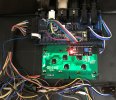fab-gm
Inspired
As discussed in https://forum.fractalaudio.com/thre...r-50-open-project.119882/page-20#post-2295522
I'm currently working on a reusable PCB design:
Rev. A will be equiped with :
Here's a 3d rendering of my current PCB design:

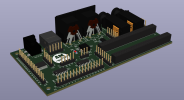
I'm currently working on a reusable PCB design:
Rev. A will be equiped with :
- 1 MIDI IN port
- 1 MIDI OUT port
- 1 USB 2.0 port
- 2 Pedal for expression pedals (TRS) or simple passive switches for on off / sustain pedals use configurable with a jumper.
- one demux for up to 16 switches (or 16 analog pots for other projects) controlled by only 5 pins
- 2 x 8 leds shifters that can be driven with only 3 extra pins and all resistors already soldered
- 1 external power barrel jack for optional MCU VIN
- accepts both 3.3V and 5V logic (configurable with a jumper)
- breadboard-like slots accepting a lot of MCU boards of different pin counts (breadboard like, for a fast connection to the attached periphals upper)
Here's a 3d rendering of my current PCB design:


Last edited:

